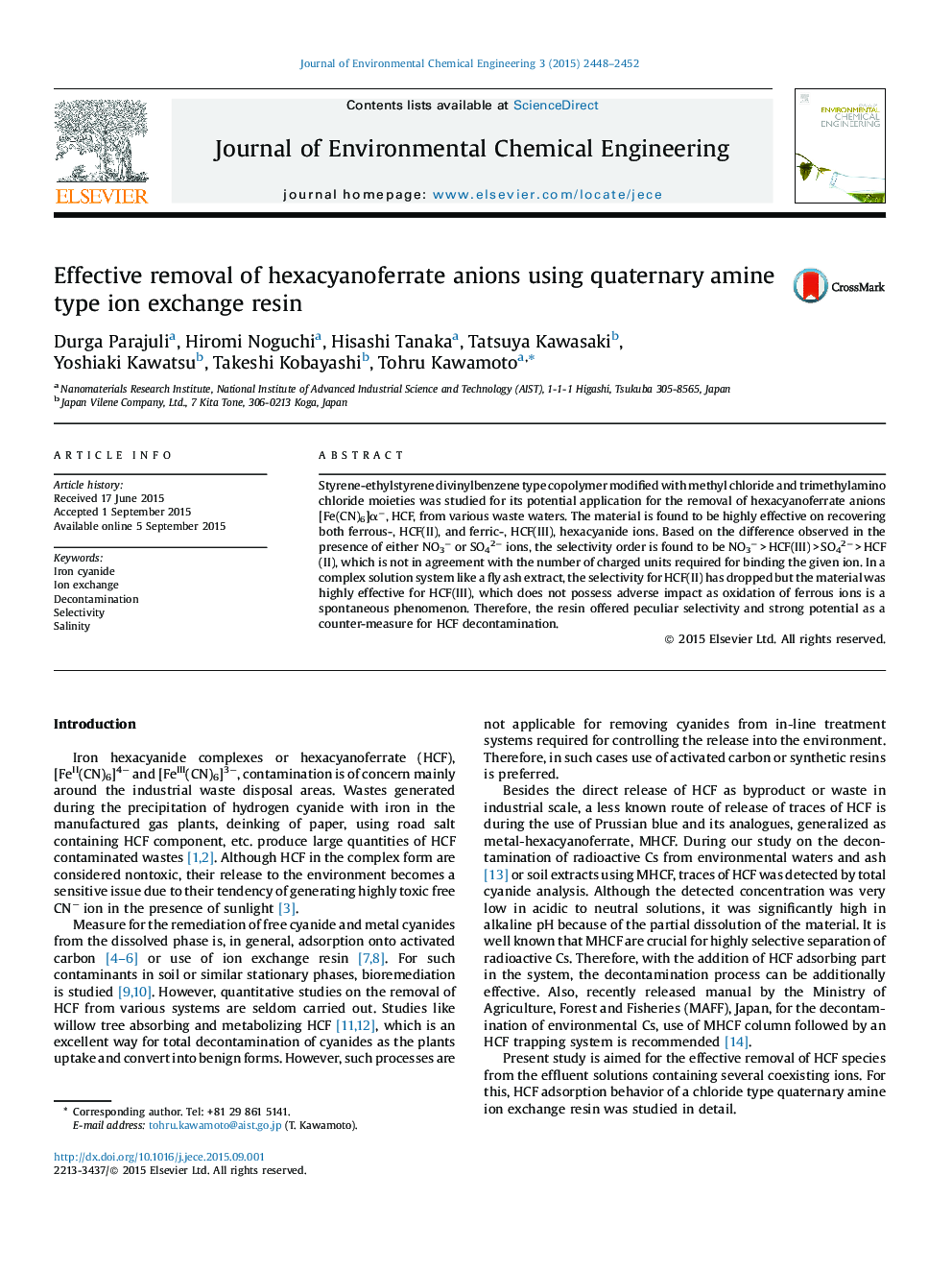| Article ID | Journal | Published Year | Pages | File Type |
|---|---|---|---|---|
| 222048 | Journal of Environmental Chemical Engineering | 2015 | 5 Pages |
•Effective removal of HCF, selectivity HCF(III) > HCF(II).•Significant effect of salinity was observed for HCF(II).•Promising pairing with MHCF adsorbents during environmental Cs decontamination.
Styrene-ethylstyrene divinylbenzene type copolymer modified with methyl chloride and trimethylamino chloride moieties was studied for its potential application for the removal of hexacyanoferrate anions [Fe(CN)6]α−, HCF, from various waste waters. The material is found to be highly effective on recovering both ferrous-, HCF(II), and ferric-, HCF(III), hexacyanide ions. Based on the difference observed in the presence of either NO3− or SO42− ions, the selectivity order is found to be NO3− > HCF(III) > SO42− > HCF(II), which is not in agreement with the number of charged units required for binding the given ion. In a complex solution system like a fly ash extract, the selectivity for HCF(II) has dropped but the material was highly effective for HCF(III), which does not possess adverse impact as oxidation of ferrous ions is a spontaneous phenomenon. Therefore, the resin offered peculiar selectivity and strong potential as a counter-measure for HCF decontamination.
